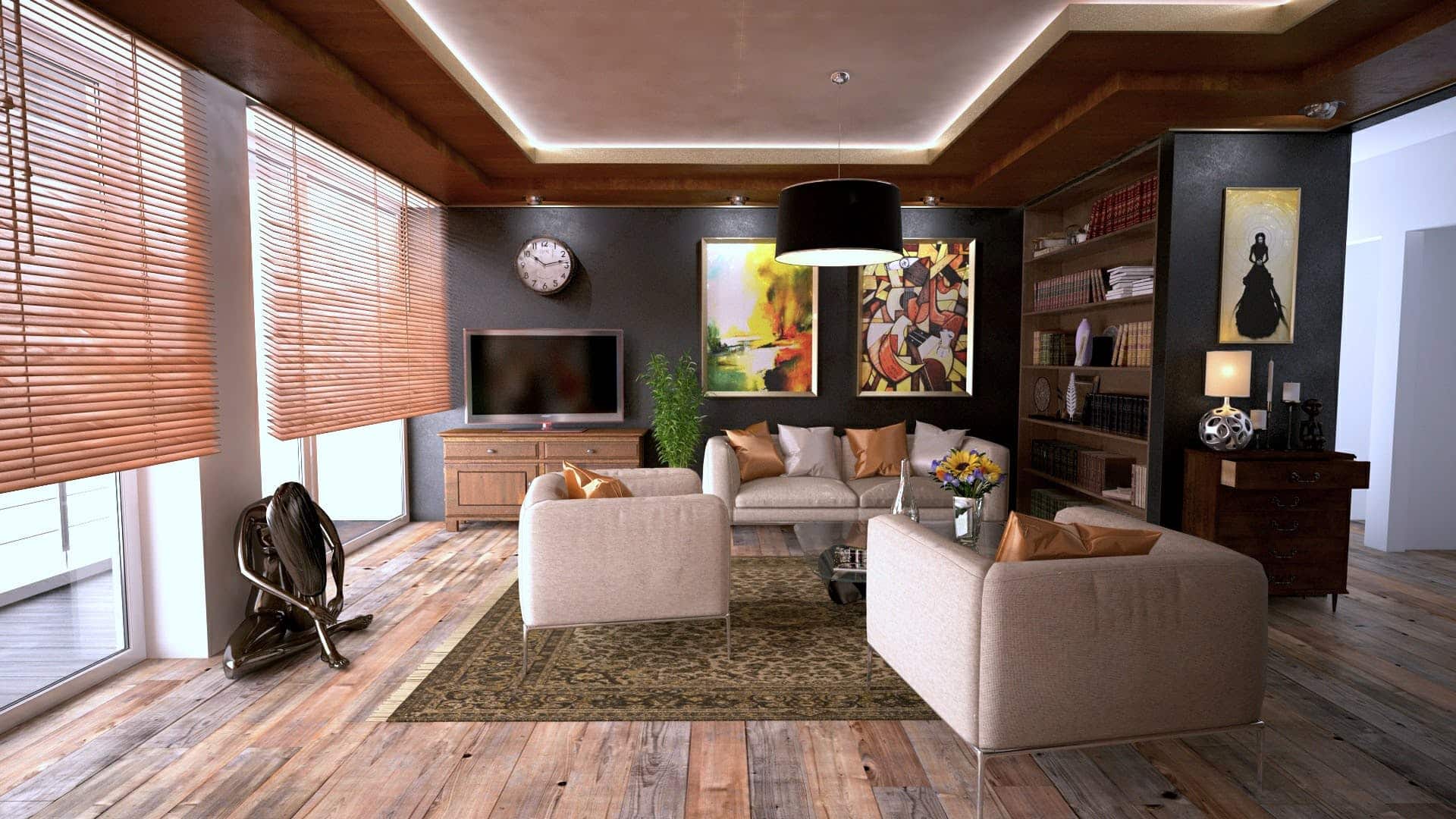Mid-century modern: a timeless design trend

The allure of mid-century modern design is as timeless as the pieces that represent it. This style, from the mid-30s to mid-60s, has resurfaced in the interior design world, providing clean lines, gentle organic curves, and a love for different materials. It embodies a sense of nostalgia for a time that was hopeful, innovative, and brimming with newfound possibilities. Let’s explore how you can incorporate this enduring trend into your decor with modern furniture, lighting, color, and more.
Understanding the Mid-century Modern Style
The mid-century modern style represents more than just a trend – it’s a movement. Born out of a post-World War II landscape, it offered a fresh, functional design. It stood as a rebellion against the ornate and intricate designs of the past, venturing towards clean lines, minimalistic aesthetics, and a seamless flow between indoor and outdoor spaces.
A lire en complément : Handmade pottery: personalizing your home with ceramics
Mid-century modern design was characterized by a sense of simplicity and the use of new materials, such as plywood and plastic. This style showcases timeless pieces of furniture that are as functional as they are aesthetically pleasing. Iconic pieces like the Eames Lounge Chair, the Saarinen Tulip Table, and the Nelson Ball Clock all exemplify this design trend.
The intent was to create items that were accessible to the everyday American, making good design available to all. This democratic approach to interior design has endowed the mid-century modern style with a timeless appeal that continues to resonate today.
Dans le meme genre : Organic home gardening: growing healthier produce
Choosing Mid-century Modern Furniture
When it comes to selecting mid-century modern furniture, the key is to opt for pieces that evoke a sense of nostalgia without seeming dated. The furniture should have clean lines and be void of unnecessary detail. Use materials such as teak and walnut which were popular during this era. Upholstery in natural colors or bold geometric patterns can complete the look.
Look for pieces that are curvy yet minimalistic, like a tulip table or an egg chair. These quintessential mid-century modern pieces create a beautiful harmony between form and function. They are sculptural yet comfortable, making them perfect for both casual lounging and entertaining guests.
Integrating vintage pieces with contemporary furniture is always a good idea. It ensures your space doesn’t feel like a time capsule from the ’50s. Remember, incorporating the mid-century modern style into your decor is about capturing the spirit of the era rather than replicating it to the last detail.
Implementing Mid-century Modern Lighting
Lighting is a key element in mid-century modern design. It not only illuminates your space but also acts as an artwork, with sculptural forms often taking the spotlight. Look for pieces that combine functionality with design. Think of a sputnik chandelier or an arc floor lamp – both are emblematic of the period and infuse a space with the distinct mid-century aesthetic.
The lighting in a mid-century modern room is all about creating the right ambiance. Use fixtures that cast a warm, diffused glow to create a cozy and inviting atmosphere. Pendant lights, wall sconces, and floor lamps with geometric shapes can inject your space with a hint of mid-century charm.
Incorporating Color and Shapes in Mid-century Modern Design
Color plays a major role in mid-century modern design. The color palette is often composed of neutral tones juxtaposed with bold, saturated colors such as mustard yellow, avocado green, and tangerine.
Incorporate these vibrant hues through accents like cushions, rugs, or artwork. They can provide a pop of color without overwhelming the overall aesthetic. Remember, less is more when it comes to color in mid-century design.
Geometric and organic shapes are another integral part of mid-century modern design. From the iconic kidney-shaped coffee tables to the starburst patterns on fabrics and wallpapers, these playful shapes add character and energy to any room. They can break the monotony of a minimalist space and infuse it with a sense of fun and whimsy.
Using Materials in Mid-century Modern Design
The mid-century modern style is renowned for its innovative use of materials. Designers of the time experimented with a variety of materials, from traditional wood to modern plastics and metals.
Wooden pieces are a staple in mid-century modern design. Teak, walnut, oak, and rosewood were popular choices for furniture. They lend a warm, earthy touch to the otherwise minimalist design ethos.
However, what truly set mid-century design apart was its embrace of newer, more contemporary materials like molded plastic, fiberglass, and stainless steel. They added a touch of modernity and gave designers the freedom to create pieces with unique, organic forms. Don’t be afraid to mix and match materials to create a layered, visually compelling interior.
Remember, the key to creating a successful mid-century modern space lies in balance. Keep a harmonious mix of vintage and modern, bold and understated, curvy and straight-line pieces. This will help you create an interior that is not only stylish and elegant but also very much in tune with today’s living standards.
Exploring Mid-Century Modern Decor in Living Room and Dining Room
The mid-century modern design aesthetic extends beyond furniture and lighting fixtures; it permeates every aspect of a space, including the layout and decor. This design trend is particularly effective in the living room and dining room, where it can create inviting and stylish spaces.
The living room is a great place to start with your mid-century modern design efforts. Begin with a minimalistic approach, focusing on clean lines and organic shapes. Invest in a few key iconic pieces such as the Eames lounge chair or a Saarinen tulip table to anchor the space. Add a statement sputnik chandelier or an arc floor lamp for an extra touch of mid-century appeal. Adding an area rug with geometric patterns or bold colors can tie the whole look together.
In a mid-century modern dining room, less is more. Consider introducing a simple, elegant dining table with clean lines paired with sleek, upholstered dining chairs. For lighting, a dramatic pendant light above the table can serve as a focal point. When it comes to decor, keep it simple and functional. Display a curated collection of vintage ceramics or glassware, or showcase a striking piece of mid-century artwork.
Remember, the key to nailing the mid-century modern decor in your living room and dining room is to maintain a balance between vintage and modern elements, functionality, and aesthetics. Always aim for a harmonious blend of classic mid-century furniture, innovative materials, and bold accents.
Bringing Mid-Century Modern Style Outdoors
The mid-century modern style is not just for indoor spaces. This iconic design trend can also be beautifully translated to your outdoor areas. Bringing the mid-century modern aesthetic to your outdoor spaces can create a cohesive and seamless flow between your indoor and outdoor living areas.
Start by choosing outdoor furniture that echoes the clean lines, organic shapes, and innovative use of materials seen in mid-century design. Look for pieces made from natural materials like teak, which were commonly used during this era, as well as modern materials like molded plastic and stainless steel. Consider adding a few iconic pieces, like the Eames outdoor table or the Bertoia Diamond chair, to create a visually stunning outdoor living space.
In terms of color, stick with a neutral palette for your outdoor furniture and introduce pops of bold colors through accessories like cushions, outdoor rugs, and planters. Don’t forget to incorporate geometric and organic shapes in your outdoor decor as well.
As in a mid-century modern interior, balance is key when designing an outdoor space. Aim for a harmonious mix of natural and modern materials, straight lines and curves, and neutral and bold colors. This will help you create an outdoor living space that is stylish, comfortable, and perfectly attuned to the mid-century modern style.
Conclusion
The mid-century modern design trend is a timeless style that offers a rich blend of aesthetics and functionality. It’s a style that celebrates simplicity, embraces innovation, and provides a sense of nostalgia for a time of optimism and creativity. Whether you’re introducing a few signature pieces to your existing decor or undertaking a complete redesign, remember to keep the balance between vintage and modern, functionality and aesthetics, and neutral and bold.
Adopting the mid-century modern style doesn’t mean living in a time capsule; it’s about capturing the spirit of an era that appreciated good design available to all. By integrating this enduring style into your home, you’re not only making a design statement but also paying tribute to a time that reshaped the way we live, dine, work, and relax. So go ahead, embrace the clean lines, organic shapes, and bold colors of mid-century modern design to create a home that is timeless, inviting, and incredibly stylish.
